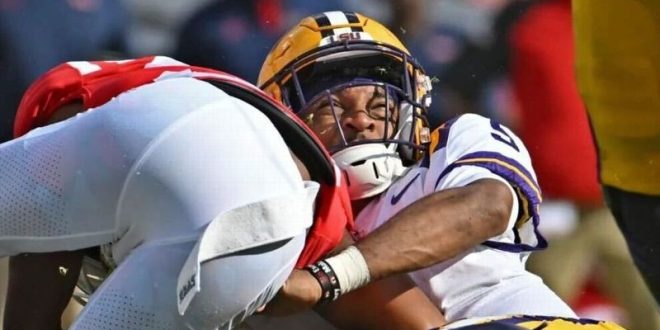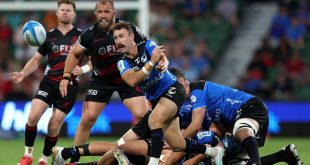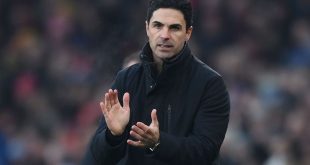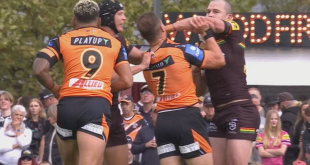about an hour ago
Baton Rouge Advocate/Leah Vann
Photo: Baton Rouge Advocate/Hilary Scheinuk
This story is published with the permission of the Baton Rouge Advocate.
Sevyn Banks lay still on the field.
On the opening kickoff of LSU’s game against Auburn on Oct. 1 inside Jordan-Hare Stadium, the LSU cornerback had sailed downfield in coverage. He delivered a helmet-leading blow to Auburn kick returner Keionte Scott.
In a moment, Banks crumpled to the grass. He didn’t get up.
Paramedics loaded and strapped his body onto a stretcher, then lifted him into a cart. Meanwhile, field officials reviewed the play for targeting.
It was an almost literal case of adding insult to injury. As Banks was carted off the field, the referee assessed a 15-yard penalty on him.
The frightening image of Banks’ hit stopped playing on the Auburn video screens after a while. On the replay, it appears almost as if Banks had drilled his own skull into his neck. It was one of those moment that leaves fans, teammates and the player himself fearing the worst.
Banks returned to the locker room and walked with a neck brace for the second half. Though he had suffered a neck injury, he is on pace to return to game action soon – and for his first game back on the active roster, he will have to serve his targeting suspension by sitting out the first half.
“I know we get fan critique all the time, and everybody hates targeting,” said Steve Shaw, NCAA national coordinator of officials. “But the rule is a player-safety rule and honestly, it has made a terrific impact and change in player behavior in how they use their heads in contact.”
The rule is in place with the best intentions. But the rule itself, as it appears in the NCAA rulebook, requires more than 1,000 words to define and explain. The next-closest penalty is a little more than 350 words.
The targeting penalty is also the only on-the-field call that must be reviewed in order to be confirmed – and the officials’ default position is to overturn the call rather than uphold it.
Defining targeting
Targeting is not simply helmet-to-helmet contact, nor is it just leading with the crown of the helmet on a tackle – and since its inception in 2008, the criteria, review process and punishment have all changed.
Before targeting, there was “spearing,” a term used to define a tackle that led with the crown of the helmet. Both the NFL and National Federation of State High School Associations banned spearing in 1976, making it a penalty of 15 yards if committed by an offensive player, or an automatic first down if committed by a defensive player.
The NCAA also adopted but altered the penalty, saying that only “intentional” spearing was illegal. By 2006, the NCAA had banned all forms of spearing.
Then came targeting.
In 2008, the NCAA implemented a new rule, saying that “no player shall initiate contact and target an opponent with the crown (top) of his helmet. When in question, it is a foul.” It added that no player shall initiate contact and target a defenseless opponent above the shoulders.
Defenseless players were then defined in various scenarios – but simply put, they were players who had completed their role in a play, or receivers who were concentrating on a ball in mid-air.
The penalty was 15 yards.
But the targeting foul didn’t truly become a hot-button issue until later.
“Where this thing began to take effect was in the 2013 season, where the targeting foul carried with it an automatic disqualification,” Shaw said. “Then everyone began to pay attention.”
The 2013 modification said that a player who committed targeting in the first half must sit out the rest of the game, and if he committed the targeting foul in the second half, he’d sit out the first half of the following game.
In addition, all targeting calls were subject to video review.
Three years later, in 2016, the targeting rule expanded to include sliding ball carriers as “defenseless.”
By 2019, the NCAA added another long-term penalty: If a player received a third targeting foul within the same season, he would be suspended for the following game. In addition, the video review process underwent a final landmark change.
Unlike other replays, on which a call starts with the assumption that the ruling on the field is correct, targeting calls are now the opposite: Officials use replay to determine if the ruling on the field was correct through certain criteria.
This meant that players who previously hadn’t committed targeting weren’t getting disqualified for a faulty call.
“We have one of the very few fouls in our rulebook that carry an automatic disqualification, so replay was there for the purposes of making sure we’re disqualifying players only if they truly met the requirements for targeting,” said John McDaid, Southeastern Conference coordinator of officials.
But video review also also brought an element of subjectivity to the process.
That, of course, leads fans and players to wonder whether they’re getting a fair shake on a given targeting call.
“I want people to understand that once we stopped the game (and) we started looking at the video, we are applying subjectivity in the framework of the playing rules,” McDaid said. “But a lot of times (with video reviews), it’s not subjective when we go to replay. Where did the ball hit the ground? Did the foot step on the sideline or not? Did the game clock run when it should or not?”
The subjective dilemma
McDaid said that targeting, broadly stated now, is aiming at an opponent for purposes of attacking, or forcible contact beyond making a legal tackle or legal block.
Where fans get confused, McDaid said, is thinking that this includes all helmet-to-helmet contact and above-the-shoulder contact.
An official must answer three questions when he reviews a targeting call:
1. Is the player defenseless?
2. Is there an indicator?
3. Was the crown of the helmet used to make forcible contact on the opponent, or, if the player was defenseless, do we have forcible contact above the shoulders?
The third option complements the first, since targeting can actually be committed against players who aren’t defenseless (“The only targeting you can have on a runner is use of the crown of the helmet,” McDaid said).
If a player is defenseless, a targeting penalty is possible even if the tackler didn’t lead with the crown of the helmet. It includes any forcible contact above the shoulders.
But the No. 2 criteria is where it gets subjective: determining if there is an “indicator,” or proof that the player attacked in a forceful manner rather than just trying to make a legal tackle or block.
It’s like proving the intent of the player in question, which is hard to do and hard to prove. But the indicators, according to the NCAA rulebook, are:
- Launch: A player leaving his feet to attack by upward thrust of the body in the head or neck area.
- Crouch: A crouch followed by an upward and forward thrust to the head or neck area, even though both feet are still on the ground.
- Leading with the helmet, shoulder, forearm, fist, hand or elbow to attack the head or neck area forcibly.
- Lowering the head before attacking by initiating forcible contact with the crown of the helmet.
“There’s some things that tell us that there is not an indicator, such as a defender holding his ground waiting to absorb the offensive player,” McDaid said. “If a pass is thrown over the middle and two players are making a bona fide attempt to go after the ball, and collide heads, that’s not an indicator. You play the ball.”
Still, sometimes if targeting is called but not confirmed, LSU coach Brian Kelly said, there is some frustration. The game stops for what turns out to be no penalty at all.
During the second quarter of last week’s LSU-Ole Miss game, Rebels cornerback Markevious Brown ran into LSU quarterback Jayden Daniels above the shoulders, seemingly with his helmet first, as he rolled on the ground.
Officials reviewed the play for targeting and ultimately issued no penalty.
“As I understand it, it’s better to administer what would seem to be a late hit or unnecessary roughness than slowing down and getting frame by frame to determine whether there’s targeting,” Kelly said. “Because if you call targeting in that situation and it isn’t targeting, then you lose the opportunity to have an unnecessary roughness call.”
Serving its purpose?
While it’s not a foolproof process, the implementation of the penalty has made an impact.
Shaw, the national coordinator of officials, said 98 targeting calls have been enforced in FBS games. That amounts to one in every 5.6 games, or 0.18 targeting fouls enforced per game.
The number started trending downward partially because of the video replay change in 2019. That year, there was an average of 0.19 targeting fouls enforced per game – down from 0.26 the year before.
In 2021, the number went slightly up to 0.20 per game – but Shaw said he expects a trickle downward this season, given the current numbers, because most targeting fouls tend to happen at the beginning of the season.
A group of medical professionals studied the targeting rule to see whether targeting plays had an effect on concussions.
According to a study published Feb. 10 in the Orthopaedic Journal of Sports Medicine, professionals examined four years’ worth of Pac-12 football games, reviewing 538 games and 68,670 plays from 2016-19.
The study found that 141 targeting penalties were called.
The risk of concussion on targeting plays initially called on the field was 36.9 times greater than all other plays. The risk of concussion on targeting plays that were confirmed after video review was 49 times greater than that for all other plays.
“It’s a trend we can’t let up on or back up in any way, shape or form,” Shaw said. “We’ve had people ask, ‘Players are kind of getting it now, let’s take the disqualification off,’ and that’s the most important thing to a player: playing time. That’s what makes this penalty what it is.”
In other words, the targeting penalty is there for a reason: To help decrease the chance of serious injury in football, which, by its nature, is a violent game.
 Top Naija News: Nigerian News, Breaking News Nigeria and World News Top Naija News is a daily news publication in Nigeria, delivering the latest breaking news in Nigeria and around the world.
Top Naija News: Nigerian News, Breaking News Nigeria and World News Top Naija News is a daily news publication in Nigeria, delivering the latest breaking news in Nigeria and around the world.




